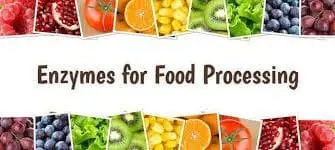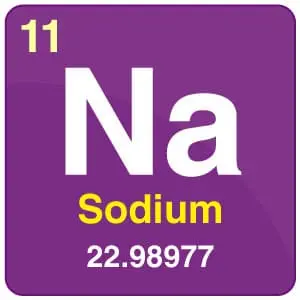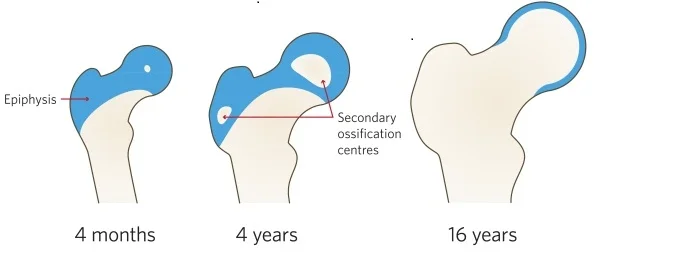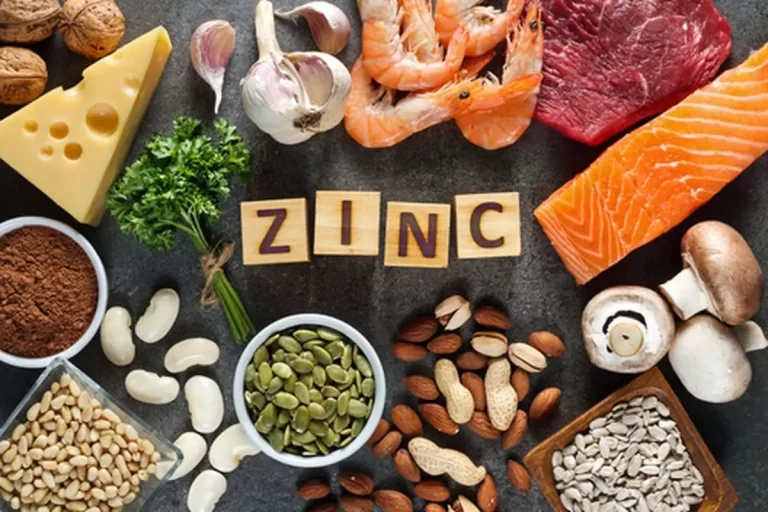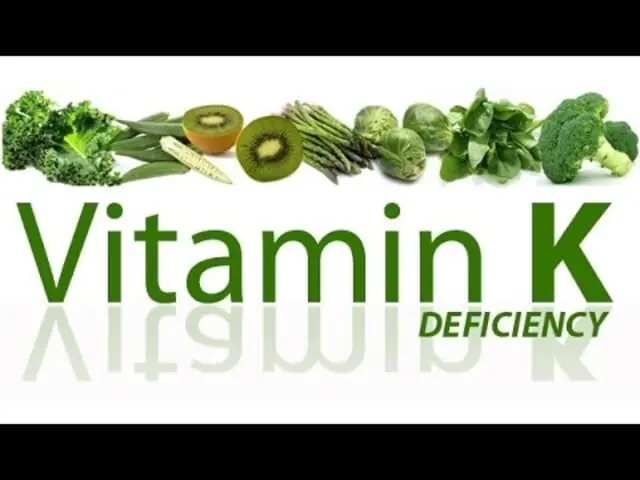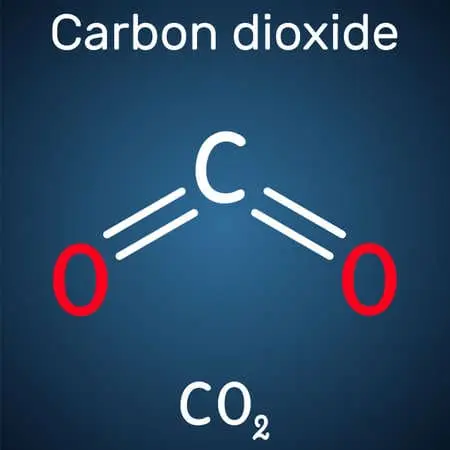Enzyme
What is Enzyme?
Proteins called enzymes (/ˈɛnzaɪmz/) speed up chemical processes to function as biological catalysts.
Enzymes may interact with molecules known as substrates, and they change the substrates into other molecules known as products.
Enzyme catalysis is required for nearly all metabolic activities in cells to proceed at speeds quick enough to support life. Enzymes are required by metabolic pathways in order to catalyze certain processes.
Enzymology is the study of enzymes, and pseudoenzyme analysis acknowledges that certain enzymes have lost their capacity for biological catalysis over evolution.
This loss is typically represented in the peculiar ‘pseudocatalytic’ features that some enzymes possess in their amino acid sequences. Enzymes can catalyze over 5,000 distinct kinds of biological processes.
Biocatalysts can also include catalytic molecules of RNA, such as ribozymes. The selectivity of an enzyme is determined by its unique three-dimensional structure.
Enzymes function similarly to other catalysts in that they expedite a process by diminishing its activation energy. Some enzymes have the capacity to transform substrate millions of times faster than products.
Orotidine 5′-phosphate decarboxylase is an extreme example; it may speed up a reaction that would normally take millions of years to complete in milliseconds.
Enzymes don’t change a reaction’s equilibrium or be consumed in chemical processes, just as any other catalyst does.
Compared to most other catalysts, enzymes are significantly more selective. The following chemicals can affect how active enzymes are: Enzyme activity is increased by molecules categorized as activators, whereas it is decreased by inhibitors.
Enzyme inhibitors are included in many medicinal medications and toxins. Outside of its ideal pH and temperature range, an enzyme’s activity sharply declines, and extreme heat can irreversibly denature many enzymes, causing them to lose their structure and catalytic capabilities.
Commercial applications for some enzymes include the production of antibiotics. Enzymes are used in certain home items to speed up chemical reactions: proteins in clothing stains caused by starch or fat are broken down by the enzymes in biological Proteins are broken down into smaller molecules by meat tenderizers and washing powders, which facilitate easy chewing.
Etymology and History
By the late 17th and early 18th centuries, it was recognized that saliva and plant extracts could convert starch to sugars and that stomach secretions could break down meat, but the exact mechanisms behind these processes were still unknown.
Diastase was the first enzyme to be discovered in 1833 by French scientist Anselme Payen.
Louis Pasteur came to the conclusion that the fermentation of sugar into alcohol by yeast was fueled by “ferments,” which were believed to be exclusive to living things, after researching this process for a few decades.
In his essay, he claimed that “the act of fermenting alcohol is associated with the organization and existence of yeast cells, not with their decomposition or death.
The name “enzyme” was originally used to describe this activity in 1877 by the German scientist Wilhelm Kühne (1837–1900). The word is derived from the Ancient Greek word ἔvζυμον (énzymon), which means “leavened, in yeast.
Subsequently, live organisms’ chemical activity was referred to as “fermentation,” whereas inanimate chemicals like pepsin were referred to as “enzymes.” In 1897, Eduard Buchner turned in his first report on the analysis of yeast extracts.
Through a series of tests conducted at the University of Berlin, he discovered that yeast extracts could ferment sugar in the absence of live yeast cells. “Zymase” is the name he gave to the enzyme that caused sucrose to ferment.
The Nobel Prize in Chemistry was awarded to him in 1907 for “his discovery of cell-free fermentation”.
Enzymes are often called based on the sort of reaction they perform, such as DNA polymerase forming DNA polymers, or the name of the substrate (lactase cleaves lactose), using Buchner’s example as a guide. The suffix -ase is coupled with these names.
Early in the 20th century, it was still unknown what enzymes’ biochemical identities were. Numerous scientists noted that proteins were linked to enzymatic activity, but some (including Nobel laureate Richard Willstätter) contended that proteins were only enzymes’ carriers and could not catalyze reactions on their own.
James B. Sumner crystallized the enzyme urease in 1926 to demonstrate that it was a pure protein; he repeated the process with the enzyme catalase in 1937.
John Howard Northrop and Wendell Meredith Stanley, who studied the digestive enzymes pepsin (1930), trypsin, and chymotrypsin, conclusively proved that pure proteins may be enzymes.
The 1946 Chemistry Nobel Prize went to these three scientists. Eventually, the ability to crystallize enzymes led to the solution of their structures by X-ray crystallography.
The first use of this was to lysozyme, an enzyme that breaks down the covering of certain bacteria and is present in tears, saliva, and egg whites.
David Chilton Phillips headed a team that determined the structure of lysozyme, which was published in 1965.
The study of structural biology and the pursuit of an atomic-level understanding of the functioning of enzymes began with the discovery of this high-resolution structure of lysozyme.
Classification and Nomenclature
Enzymatic activity and amino acid sequence similarity, which indicate an evolutionary connection, are the two primary classification criteria for enzymes. activity of enzymes.
The term “enzyme” usually ends in place and is derived from the substrate or chemical process that the enzyme catalyzes.
Lactase, alcohol dehydrogenase, and DNA polymerase are a few examples. Isomers are distinct enzymes that catalyze the same chemical reaction.
An EC number system for enzymes was created by the International Union of Biochemistry and Molecular Biology (EC stands for “Enzyme Commission”).
The letter “EC” denotes the enzyme, and is followed by four numbers that indicate the hierarchy of enzymatic activity (from highly generic to very specialized).
In other words, the enzyme is categorized in general terms by its mechanism by the first number, and then further specificity is added by the subsequent numbers.
The top-level classification is:
- (EC 1): Oxidoreductases catalyze processes involving oxidation and reduction
- EC 2, Transferases: these enzymes move a functional group (such a phosphate or methyl group)
- EC 3, Hydrolases: these enzymes accelerate the breakdown of diverse bonds.
- EC 4, Lyases: cleave several types of bonds by mechanisms other than oxidation and hydrolysis
- EC 5, Isomerases: these enzymes catalyze changes in isomerization within a single molecule.
- EC 6, Ligases: covalently bind two molecules together.
- EC 7, Translocases: these enzymes facilitate the passage of ions or molecules through membranes or their dissociation inside them.
Other characteristics including the substrate, products, and chemical process are used to separate these divisions. Four number identifiers provide comprehensive information about an enzyme. For instance, hexokinase (EC 2.7.1.1) is a transferase (EC 2) that modifies hexose sugars, which are molecules with an alcohol group, by adding a phosphate group (EC 2.7).similarity between sequences.
Sequence Similarity
Sequence similarity is not reflected in EC categories. For example, two ligases with the same EC number but different sequences might catalyze the same process. Enzymes, like all other proteins, have been categorized into many families based on the closeness of their sequences, regardless of their function. Numerous databases, including Pfam, maintain records of these families for proteins and protein families.
Non-homologous isofunctional Enzymes
Refer to unrelated enzymes with the same functional characteristics. Homologous gene displacement can result from the transmission of these genes to other species, particularly bacteria, through horizontal gene transfer.
Where they can supplant native genes that perform the same function. isofunctional enzymes that are non-homologous. Non-homologous isofunctional enzymes are unrelated enzymes with the same enzymatic activity.
Horizontal gene transfer has the potential to disperse these genes throughout unrelated species, particularly bacteria, where they may supplant native genes with identical functions, resulting in homologous gene displacement.
Structure
Typically, enzymes are globular proteins that may function independently or in bigger complexes. The structure of the enzyme is determined by its amino acid sequence, which also controls its catalytic activity.
Even while structure dictates function, structure by itself is not yet able to anticipate a novel enzyme activity. When heated or subjected to chemical denaturants, enzyme structures unfold, or denature, and this structural disturbance usually results in a loss of function.
Since temperatures above a species’ normal range are typically associated with enzyme denaturation, industrial users highly value the ability of bacteria found in volcanic environments, such as hot springs, to produce enzymes at high temperatures that enable the operation of enzyme-catalyzed reactions at extremely high rates.
Typically, enzymes are substantially bigger than their substrates. The monomer of 4-oxalocrotonate tautomerase contains 62 amino acid residues, while animal fatty acid synthase has almost 2,500 residues.
The catalytic region, which makes up only 2-4 amino acids of their structure, is directly responsible for catalysis. The binding sites where residues orient the substrates are next to this catalytic site.
The active site of the enzyme is made up of the binding and catalytic sites. The bulk of the enzyme’s surviving structure keeps the active site’s exact orientation and dynamics in place.
Certain enzymes have sites to bind and orient catalytic cofactors; amino acids are not directly engaged in catalysis in these cases.
Additionally, allosteric sites—where a tiny molecule binds and changes the structure to either boost or reduce activity—can be found in the structures of enzymes.
There are a few RNA-based biological catalysts known as ribozymes that can function both alone and in conjunction with proteins. The most prevalent of them is the protein-catalytic RNA complex known as the ribosome.
Mechanism
Substrate binding
Before they can catalyze any chemical process, enzymes must attach to their substrates. When it comes to the substrates they bind and the chemical reactions they catalyze, enzymes are often highly selective.
By binding pockets with comparable charge, shape, and hydrophilic/hydrophobic properties to the substrates, specificity is accomplished.
Hence, enzymes are chemoselective, regioselective, and stereospecific because they can discriminate between very identical substrate molecules.
Copying and expressing the genome involves some of the enzymes with the highest specificity and precision. There are “proof-reading” processes in several of these enzymes.
In this case, a reaction is initially catalyzed by an enzyme like DNA polymerase, which is followed by a stage where the product’s accuracy is verified.
For high-fidelity mammalian polymerases, this two-step procedure yields average error rates of fewer than 1 mistake in 100 million reactions: 5.3.1 Ribosomes, aminoacyl tRNA synthetases, and RNA polymerase all have comparable proofreading processes.
On the other hand, certain enzymes have wide specificity and exhibit enzyme promiscuity, meaning they may function on a variety of substrates that are physiologically relevant.
Numerous enzymes have minor secondary functions that developed accidentally, or neutrally, and might serve as the basis for the selection of a new function through evolution.
“Lock and key” model
Emil Fischer postulated in 1894 that the enzyme and the substrate both have certain complementary geometric forms that precisely fit into one another in order to explain the observed specificity of enzymes.
Frequently called “the lock and key” model.: 8.3.2 The stability of the transition state that enzymes reach is not explained by this early concept, which also explains enzyme specificity.
Induced fit model
Daniel Koshland proposed an alternative interpretation of the lock and key concept in 1958. He proposed that because enzymes are relatively flexible structures, interactions between the enzyme and substrate constantly reconfigure the active site.
Because of this, the substrate does not just attach itself to a hard active site; rather, the side chains of amino acids that comprise the active site are shaped into the exact locations necessary for the enzyme to carry out its catalytic activity.
In certain instances, such as When the substrate molecule approaches the active site of glycosidases, it too undergoes a modest shape change.
Until the substrate is fully bonded, the active site keeps changing, and the ultimate shape and charge distribution are then established.
Through the conformational proofreading process, the induced fit may improve the fidelity of molecule recognition in the presence of noise and competition.
Catalysis
Numerous methods exist for enzymes to quicken processes, all of which result in a decrease in the activation energy (ΔG, or Gibbs free energy).
- By stabilizing the transition state:
- lowering the energy of the transition stage by establishing an environment whose charge distribution is complementary to its own
- By offering a different reaction route, the substrate can react momentarily to produce a covalent intermediate that provides a lower energy transition state.
- by offering a different route for the reaction, which involves briefly interacting with the substrate to produce a covalent intermediate that produces a lower energy transition state.
Multiple of these strategies may be used simultaneously by enzymes. Proteases like trypsin, for instance, use a catalytic triad to carry out covalent catalysis, an oxyanion hole to stabilize charge accumulation on transition states, and an orientated water substrate to finish hydrolysis.
Dynamics
The intricate internal dynamic motions of enzymes, which include the movements of individual amino acid residues, groups of residues creating a protein loop or unit of secondary structure, or even a whole protein domain, are what distinguish enzymes from stiff, static structures.
A conformational ensemble of slightly varied structures that interconvert with one another at equilibrium is produced by these movements. Various stages within this ensemble could be linked to various facets of an enzyme’s operation.
Catalytic resonance theory is compatible, for instance, with the relationship between distinct conformations of the enzyme dihydrofolate reductase and the phases of the catalytic cycle that involve substrate binding, catalysis, cofactor release, and product release.
Substrate Presentation
The process of sequestering the enzyme from its substrate is known as substrate presentation. Enzymes can isolate themselves from a substrate in the cytosol or nucleus by adhering to the plasma membrane.
Alternatively, an enzyme may be isolated from its substrate in the disordered area of the membrane by lipid rafts.
The enzyme combines with its substrate when it is released. As an alternative, the enzyme can be activated by sequestering it close to its substrate.
For instance, the enzyme may be soluble and, when activated, attach to a lipid within the plasma membrane before acting on other molecules within the membrane.
Allosteric Modulation
Different from the active site, allostery sites are pockets of an enzyme that attaches to molecules found in the surrounding cell.
Following transduction to the active site, these chemicals alter the dynamics or conformation of the enzyme, which in turn alters the enzyme’s rate of reaction.
Allosteric interactions have the ability to either activate or inhibit enzymes in this manner. Feedback regulation is the result of allostery with metabolites either upstream or downstream in an enzyme’s metabolic pathway.
This changes the enzyme’s activity based on the flow through the remaining portion of the route.
Cofactors
Certain enzymes exhibit complete activity without the requirement for other substances. Others need to be bound for action by non-protein molecules known as cofactors. Cofactors can be either organic (like flavin and heme) or inorganic (like metal ions and iron-sulfur clusters).
Metal ions, for example, can aid in stabilizing nucleophilic species inside the active site. These cofactors have a variety of uses.
Coenzymes, which are released from the active site of an enzyme during a reaction, and prosthetic groups, which are firmly bonded to an enzyme, are two types of organic cofactors.
Covalent bonds can form between organic prosthetic groups (biotin in enzymes such as Carbonic anhydrase, an example of an enzyme containing a cofactor, has a zinc cofactor attached to its active site.
Usually located at the active site, these firmly bonded ions or molecules play a role in catalysis. 8.1.1 Heme and flavin cofactors, for instance, are often engaged in redox processes.
Apoenzymes, sometimes referred to as apoproteins, are enzymes that lack a cofactor yet need one to function. A holoenzyme, also known as a haloenzyme, is an enzyme that has the cofactor(s) necessary for its function.
When referring to enzymes that have more than one protein component, such as DNA polymerases, the word “holoenzyme” can also be used to describe the whole complex that has all the subunits required for action.
Coenzymes
Coenzymes are organic compounds that are attached to enzymes either firmly or loosely. Chemical groups are transferred between enzymes via coenzymes.
Adenosine triphosphate (ATP), NADH, and NADPH are a few examples. Vitamins are the source of several coenzymes, including thiamine pyrophosphate (TPP), tetrahydrofolate (THF), flavin mononucleotide (FMN), and flavin adenine dinucleotide (FAD).
The body is unable to synthesize these coenzymes from scratch, thus closely similar substances like vitamins must be obtained from the diet. Among the chemical groups that were transported are:
- NAD or NADP+ transports the hydride ion (H−).
- the phosphate group, which is transported by ATP
- the acetyl group, which coenzyme A carries
- The methyl, formyl, or methenyl groups are transported via folic acid, and
- the methyl group that S-adenosylmethionine carries
- Coenzymes are a unique class of substrates, or second substrates, that are shared by many distinct enzymes because they undergo chemical
changes as a result of enzyme activity. For instance, the coenzyme NADH is known to be used by around 1000 enzymes.
Within the cell, coenzymes are typically constantly renewed and their concentrations are kept constant.
For instance, methionine adenosyltransferase generates S-adenosylmethionine while the pentose phosphate pathway regenerates NADPH.
Because of their constant regeneration, coenzymes may be utilized in very small quantities and with great intensity. The human body, for instance, uses up its own weight in ATP every day.
Thermodynamics
Enzymes don’t change the location of the chemical equilibrium of the reaction, just like any other catalyst. An enzyme causes the process to proceed faster but in the same direction as it would without it: 8.2.3 For instance, depending on the reactant concentration, carbonic anhydrase can catalyze a process in either direction.
CO2+H2O<——–H2CO3 (in tissues; high CO2 concentration)
CO2+H2O<——–H2CO3 (in lungs; low CO2 concentration)
The activation energy required to create the transition state, which then breaks down into products, determines how quickly a reaction proceeds.
Because they decrease the energy of the transition state, enzymes speed up reactions. A low-energy enzyme-substrate complex (ES) is first formed via binding.
Second, compared to the uncatalyzed reaction (ES), the enzyme stabilizes the transition state, requiring less energy to reach. In the end, the products are released as the enzyme-product complex (EP) dissociates.
Because enzymes have the ability to link two or more processes, it is possible to “drive” a thermodynamically unfavorable reaction so that the total energy of the products is less than that of the substrates. For instance, various chemical processes are frequently fueled by the hydrolysis of ATP.
Kinetics
The study of enzyme kinetics focuses on how enzymes bind to substrates and convert them into products. Enzyme tests are frequently employed to provide the rate data needed for kinetic analysis.
Michaelis–Menten kinetics is the name given to the quantitative theory of enzyme kinetics that was introduced in 1913 by Leonor Michaelis and Maud Leonora Menten.
Michaelis and Menten’s main contribution was to consider enzyme reactions as two-stage processes. In the first, the enzyme and substrate combine to form the enzyme-substrate complex by reversible binding.
This is referred to in their honor occasionally as the Michaelis-Menten complex. After that, the enzyme releases the product by catalyzing the reaction’s chemical step. G. E. Briggs and J. B. S. Haldane expanded on this work by deriving kinetic equations that are still in use today.
The concentration of the substrate and the state of the solution affect enzyme rates. An enzymatic reaction’s maximal speed is determined by increasing the substrate concentration until a steady rate of product production is seen.
The saturation curve on the right illustrates this. Saturation results from the progressive conversion of the free enzyme into the substrate-bound ES complex as the concentration of substrate rises.
All of the enzyme’s active sites are bound to the substrate at the enzyme’s maximal reaction rate (Vmax), and the quantity of ES complex equals the total amount of enzyme. Vmax is just one of several crucial kinetic factors.
Another crucial factor is the quantity of substrate required to get a specific rate of reaction. The substrate concentration needed for an enzyme to attain half of its maximal reaction rate is known as the Michaelis-Menten constant (Km); typically, each enzyme has a unique KM for a particular substrate.
The turnover number, or kcat, is another helpful constant. It represents the quantity of substrate molecules that an active site can manage in a second.
An enzyme’s efficiency can be stated in terms of kcat/Km. The rate constants for each stage of the reaction up to and including the first irreversible step are included in this value, which is also known as the specificity constant.
The specificity constant is helpful for comparing various enzymes to one another or the same enzyme with different substrates since it represents both affinity and catalytic activity.
The diffusion limit, or theoretical maximum for the specificity constant, is around 108 to 109 (M−1 s−1).
At this stage, catalysis will occur whenever the enzyme collides with its substrate, and the rate Diffusion rate, not the reaction rate, determines the maximum amount of product creation.
This characteristic is referred to as catalytic or kinetic perfection in enzymes. Enzymes such as β-lactamase, carbonic anhydrase, acetylcholinesterase, fumarase, catalase, and superoxide dismutase are examples of this type of enzyme.
Such enzymes have a turnover rate of up to several million reactions per second: 9.2. However, most enzymes are far from ideal.
The mean values of 


Owing to macromolecular crowding and restricted molecular mobility, many biochemical or cellular activities depart markedly from these conditions. The model’s most recent, intricate expansions make an effort to account for these impacts.
Inhibition
Different kinds of enzyme inhibitors can lower the rates of enzyme reactions.
Types of Inhibition
Competitive
It is impossible for a substrate and a competitive inhibitor to bind to the enzyme simultaneously. Competitive inhibitors frequently have striking similarities to the enzyme’s actual substrate.
For instance, the enzyme dihydrofolate reductase, which catalyzes the conversion of dihydrofolate to tetrahydrofolate, is competitively inhibited by the medication methotrexate.
The accompanying image illustrates how the structures of this medication and dihydrofolate are identical. A high concentration of substrate can overcome this kind of inhibition.
Occasionally, the inhibitor may attach to a place different than the typical substrate binding site and use an allosteric effect to modify the typical binding site’s structure.
Non-Competitive
An inhibitor that is non-competitive binds to a different location than the substrate. Because the substrate continues to attach with its typical affinity, Km stays constant. Nonetheless, the inhibitor lowers the enzyme’s catalytic efficiency, which lowers Vmax. High substrate concentrations cannot overcome non-competitive inhibition, in contrast to competitive inhibition.
Uncompetitive
Because an uncompetitive inhibitor can only bind to the complex of the enzyme and substrate, it is most effective when the substrate concentration is high. The enzyme-substrate combination is inactive when the inhibitor is present.: 78 This kind of inhibition is not common.
Mixed
An allosteric site is bound by a mixed inhibitor, and the binding of the inhibitor and substrate has an effect on one another. When attached to the inhibitor, the enzyme’s activity is diminished but not completely stopped. The Michaelis-Menten equation is not followed by this kind of inhibitor.
Irreversible
An irreversible inhibitor generally forms a covalent link with the protein to irreversibly inactivate the enzyme. Aspirin and penicillin are popular medications that function in this way.
Functions of Inhibitors
Inhibitors may function as a component of a feedback system in a variety of species. One chemical may operate as an inhibitor for the enzyme at the start of the pathway that generates it if an enzyme creates too much of it in the organism.
This would cause the substance’s production to slow down or cease when there is an adequate quantity. This type of response is unfavorable.
This process is used by major metabolic pathways including the citric acid cycle. Inhibitors are frequently employed as medications because they alter how enzymes work.
Like methotrexate above, many of these medications are reversible competitive inhibitors that mimic the enzyme’s natural substrate; other well-known examples are statins.
Which are used to treat excessive cholesterol, and protease inhibitors, which are used to treat retroviral infections like HIV.
Aspirin is a well-known example of an irreversible inhibitor that is a medication; it inhibits the COX-1 and COX-2 enzymes, which are responsible for producing prostaglandin, an inflammatory messenger. Poisons include other enzyme inhibitors.
For instance, the toxin cyanide inhibits an enzyme irreversibly by combining with iron and copper in the cytochrome c oxidase enzyme’s active site to prevent cellular respiration.
Factors Affecting Enzyme Activity
Since enzymes are composed of proteins, changes in a variety of physiological and chemical conditions, including pH, temperature, substrate concentration, etc., can affect how they function. The pH ideals for different enzymes are displayed in the following table.
Enzyme | Optimum pH | pH description |
| Adenosine triphosphate | 9.0 | Alkaline |
| Amylase (malt) | 4.6–5.2 | Acidic |
| Amylase (pancreas) | 6.7–7.0 | Acidic-neutral |
| Arginase | 10.0 | Highly alkaline |
| Catalase | 7.0 | Neutral |
| Cellobiase | 5.0 | Acidic |
| Cholinesterase | 7.0 | Neutral |
| Fumarase | 7.8 | Alkaline |
| Invertase | 4.5 | Acidic |
| Lipase (castor oil) | 4.7 | Acidic |
| Lipase (pancreas) | 8.0 | Alkaline |
| Lipase (stomach) | 4.0–5.0 | Acidic |
| Maltase | 6.1–6.8 | Acidic |
| Pepsin | 1.5–1.6 | Highly acidic |
| Ribonuclease | 7.0–7.5 | Neutral |
| Sucrase | 6.2 | Acidic |
| Trypsin | 7.8–8.7 | Alkaline |
| Urease | 7.0 | Neutral |
Biological Function
Inside living things, enzymes have a wide range of uses. They are essential for cell control and signal transmission, frequently through kinases and phosphatases.
They also provide movement, since myosin, a component of the cytoskeleton, transports cargo across the cell and hydrolyzes adenosine triphosphate (ATP) to produce muscular contraction. Ion pumps engaged in active transport are other ATPases found in the cell membrane.
More unusual roles for enzymes include the production of light in fireflies by luciferase. Enzymes that facilitate viral release from cells, like the influenza virus neuraminidase, or that aid in cell infection, like the HIV integrase and reverse transcriptase, can also be found in viruses.
Animal digestive systems utilize enzymes for a variety of purposes. Large molecules (proteins or carbohydrates, respectively) are broken down into smaller ones by enzymes like amylases and proteases so the intestines can absorb them.
For instance, starch molecules are too big to be absorbed from the gut; nevertheless, starch chains are hydrolyzed by enzymes to produce smaller molecules like maltose and finally glucose, which can be absorbed.
Distinct dietary components are broken down by distinct enzymes. Because ruminants eat only plants, their gut microbes create the enzyme cellulase, which helps break down the cellulose cell walls of plant fiber.
Metabolism
Enzymes can collaborate in a certain sequence to form metabolic pathways.30.1 One enzyme uses the byproduct of another enzyme as a substrate in a metabolic process. Another enzyme receives the product after the catalytic process.
Occasionally, multiple enzymes can catalyze the same process simultaneously, enabling more intricate control. For instance, one enzyme may offer a low, consistent activity while another may induce a high activity.
The sequence in which these processes proceed is set by enzymes. Without enzymes, metabolism could not be controlled to meet the demands of the cell or proceed through the same stages.
A few critical stages in the majority of important metabolic pathways are controlled, usually by enzymes that hydrolyze ATP.
Due to the large amount of energy released by this process, thermodynamically unfavorable reactions can be coupled to ATP hydrolysis, which in turn drives the entire chain of connected metabolic reactions.
Control of activity
The cell controls the activity of its enzymes in five major ways.
Regulation
Other substances have the ability to either activate or inhibit enzymes. As an illustration, the final product(s) of a metabolic route frequently function as inhibitors for one of the pathway’s initial enzymes (typically the first irreversible step, or committed step), controlling the quantity of end product produced by the processes.
Because the quantity of the final product generated is controlled by its own internal mechanisms, this type of regulation is known as a negative feedback system.
personal focus.: 141–48 The rate at which intermediate metabolites are synthesized can be efficiently adjusted by a negative feedback system to meet the needs of the cells.
This minimizes the overproduction of final goods and aids in the efficient use of resources and energy. Enzymatic activity regulation aids in the preservation of a steady internal environment in living things, much like other homeostatic mechanisms.
Post-translational modification
Phosphorylation, myristoylation, and glycosylation are a few instances of post-translational modification.: 149–69.
For instance, the phosphorylation of certain enzymes, such as glycogen synthase, aids in the regulation of glycogen production or breakdown in response to insulin and enables the cell to react to variations in blood sugar.
The breakage of the polypeptide chain is an additional instance of post-translational modification. The pancreas produces the inactive digestive protease chymotrypsinogen, which is then sent to the stomach where it is activated.
This prevents the enzyme from breaking down other tissues, such as the pancreas, before it reaches the intestine. A zymogen, sometimes referred to as a proenzyme, is this kind of dormant precursor to an enzyme (149–53).
Quantity
Phosphorylation, myristoylation, and glycosylation are a few instances of post-translational modification.: 149–69 For instance, the phosphorylation of certain enzymes.
As glycogen synthase, aids in the regulation of glycogen production or breakdown in response to insulin and enables the cell to react to variations in blood sugar.
The breakage of the polypeptide chain is an additional instance of post-translational modification. The pancreas produces the inactive digestive protease chymotrypsinogen, which is then sent to the stomach where it is activated.
This prevents the enzyme from breaking down other tissues, such as the pancreas, before it reaches the intestine. A zymogen, sometimes referred to as a proenzyme, is this kind of dormant precursor to an enzyme (149–53).
Subcellular Distribution
separate metabolic pathways can occur in separate cellular compartments due to the ability of enzymes to be compartmentalized.
For instance, fatty acids are produced in the cytosol, endoplasmic reticulum, and Golgi by one group of enzymes, and then used by another group of enzymes in the mitochondrion through the process of β-oxidation as an energy source.
Furthermore, the trafficking of the enzyme to distinct compartments may alter the degree of oxidative state (oxidizing periplasm or reducing cytoplasm) or protonation (neutral cytoplasm and acidic lysosome), which in turn influences the activity of the enzyme.
Enzyme subcellular localization can also be changed by polymerization of the enzymes into macromolecular cytoplasmic filaments, as opposed to partitioning into membrane-bound organelles.
Organ Specialization
Different organs and tissues in multicellular eukaryotes have distinct gene expression patterns, which results in distinct sets of enzymes (referred to as isozymes) accessible for metabolic processes.
This offers a means of controlling the organism’s total metabolism. Hexokinase, the initial enzyme in the glycolysis process, for instance, possesses a distinct variant known as glucokinase.
Which is produced in the pancreas and liver and has a lower affinity for glucose but a higher sensitivity to glucose concentration. This enzyme controls the synthesis of insulin and senses blood sugar.
Involvement in Disease
A genetic illness can result from any defect (mutation, overproduction, underproduction, or deletion) of a single important enzyme since homeostasis depends on the precise regulation of enzyme activity.
Of the dozens of different kinds of enzymes found in the human body, the dysfunction of only one type can be lethal.
Tay-Sachs disease, in which sufferers are deficient in the enzyme hexosaminidase, is an illustration of a deadly hereditary illness brought on by an insufficient enzyme.
The most prevalent kind of phenylketonuria is one instance of an enzyme shortage. Phenylalanine and its associated compounds accumulate as a result of several single amino acid mutations in the enzyme phenylalanine hydroxylase, which catalyzes the initial step in the breakdown of phenylalanine.
A considerable number of mutations are located outside of the active site and lower activity by altering the proper function of the protein or by directly impairing binding and catalysis. oligomerization.
If the condition is not addressed, this might result in an intellectual handicap. Pseudocholesterase deficiency is an additional instance when the body’s capacity to hydrolyze choline ester medications is compromised.
Certain functional enzyme deficits, such as pancreatic insufficiency and lactose intolerance, can be treated by oral enzyme therapy.
Germline mutations in the genes encoding DNA repair enzymes are another way that malfunctioning enzymes can lead to illness.
Because cells are less able to repair mistakes in their genomes, defects in these enzymes lead to cancer. Cancers emerge as a result of the gradual accumulation of mutations brought on by this.
Xeroderma pigmentosum is one such genetic cancer disease that results in skin cancer growth even after very little exposure to UV radiation.
Evolution
Enzymes undergo mutations and sequence divergence over time, much like any other protein. Because of their pivotal function in metabolism, the evolution of enzymes is essential to adaptability.
Therefore, whether and how enzymes may alter their enzymatic activity simultaneously is a crucial subject.
Although evolution may sometimes occur without gene duplication, it is widely acknowledged that many novel enzyme functions have developed as a result of gene duplication and mutation of the duplicate copies.
The progenitor of creatine amidohydrolase (creatinase) and methionyl aminopeptidase (MAP) is one example of an enzyme whose activity has altered.
Homologous but catalyze radically distinct processes (creatine is hydrolyzed by creatinase to sarcosine and urea, whereas MAP removes the amino-terminal methionine from nascent proteins).
Furthermore, creatinase lacks the metal-ion dependence of MAP, therefore this attribute was also lost over time.
Small variations in an enzyme’s enzymatic activity are quite prevalent. Specifically, single amino acid modifications in their substrate binding pockets can readily and rapidly alter their substrate binding selectivity.
This is often observed in the major classes of enzymes, including kinases. It is currently standard practice to alter enzyme activity or specificity for industrial purposes by artificial (in vitro) evolution.
Industrial Applications
When very particular catalysts are needed, the chemical industry and other industrial uses utilize enzymes.
In general, the range of reactions that enzymes may catalyze is restricted due to their instability in organic solvents and high temperatures.
As a result, attempts are being made in the field of protein engineering research to produce new enzymes with unique characteristics, either via in vitro evolution or rational design.
A few enzymes have now been created “from scratch” to catalyze processes that do not happen in nature as a result of these efforts, which are starting to show results.
| Application | Enzymes used | Uses |
| Biofuel industry | Amylase, glucanases, proteases beta glucanases Amyloglucosidase and pullulanase Acetolactate decarboxylase (ALDC) | Break down cellulose into sugars that can be fermented to produce Pretreatment of biomass for biofuel production. |
| Biological detergent | Proteases, amylases, lipases Mannanases | Remove protein, starch, and fat or oil stains from laundry and dishware. Guar gum, a frequent food ingredient, may be cleaned of food stains. |
| Brewing industry | Amylase, glucanases, proteases beta glucanases Amyloglucosidase and pullulanase Acetolactate decarboxylase (ALDC) | Split polysaccharides and proteins in the malt. Improve the wort and beer filtration characteristics. Make low-calorie beer and adjust fermentability. Increase fermentation efficiency by reducing diacetyl formation. |
| Culinary uses | Papain | Tenderize meat for cooking. |
| Dairy industry | Rennin Lipases | Hydrolyze protein in the manufacture of cheese. Produce blue cheeses like Roquefort and Camembert cheese. |
| Food processing | Amylases Proteases Trypsin Cellulases, pectinases | Produce sugars from starch, such as in making high-fructose corn syrup. Reduce the amount of protein in the flour while preparing biscuits. Manufacture hypoallergenic baby foods. Clarify fruit juices. |
| Nucleases, DNA ligase, and polymerases | Nucleases, DNA ligase and polymerases | Use restriction digestion and the polymerase chain reaction to create recombinant DNA. |
| Paper industry | Xylanases, hemicellulases, and lignin peroxidases | Remove lignin from kraft pulp. |
| Personal care | Proteases | To avoid infections, remove any proteins from your contact lenses. |
| Starch industry | Amylases | Convert starch into glucose and various syrups |
FAQ
What are enzymes and their types?
Enzymes are classified into six categories: hydrolases, oxidoreductases, lyases, transferases, ligases, and isomerases.
Why are enzymes called?
Since the enzymes quicken biochemical reactions in living things, they are referred to as biocatalysts. By acting as a catalyst, they reduce the activation energy and quicken the process. An enzyme that accelerates a chemical process without changing its equilibrium is called a biocatalyst.
What is the function of enzymes?
Enzymes share two essential characteristics with all other catalysts. Firstly, they speed up chemical processes without getting eaten or changed irreversibly in the process. Second, they speed up reactions without changing the way reactants and products are in chemical equilibrium.
What are the 3 main enzymes in the body?
The pancreas and mouth produce amylase, which breaks down complex carbs. The pancreas produces lipase, which breaks down lipids. Protease, which breaks down proteins, is produced by the pancreas.
What are the two main types of enzymes?
Lyases: These enzymes create new double bonds by removing or adding water, carbon dioxide, or ammonia across existing ones. Isomerases: Isomerase enzymes catalyze structural changes in molecules that cause the molecules to change form.
Who defined enzymes?
The first enzyme was identified in 1833 and was a combination of amylases called diastase. Other hydrolytic enzymes like pepsin and invertase were also found shortly after, but Wilhelm Kühne did not name the enzyme until 1877.
Is An enzyme A Protein?
Enzymes are proteins that help speed up the metabolism—the chemical reactions that take place inside our bodies. They build with certain materials and destroy others. Enzymes are present in all living organisms. The human body naturally produces enzymes.

